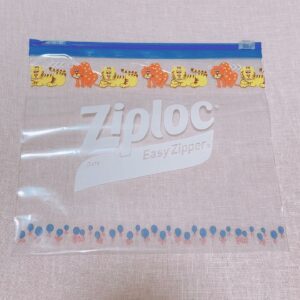Direct-to-film transfers, also referred as DTF transfers, are a well-liked technique for making high-quality prints on a wide range of materials. Yet, to preserve their quality and usefulness over time, careful storage is crucial. But how to store DTF transfers? This article will examine three methods for storing DTF transfers, as well as efficient storage strategies and recommended practices. You can make sure that your DTF transfers stay in excellent shape and are available for use whenever you need them by adhering to these guidelines.

How do you store direct to film prints?
Method 1: Use Gallon Ziploc Bag with Silica
Keeping DTF transfers dry and protected is possible by storing them in a gallon ziploc bag with silica packets. Here is how you do it:
- First, make sure that your DTF transfers are dry and clean.
- The transfers should then be put in a gallon-sized ziploc bag. Before you close the bag, be sure to get rid of as much air as you can.
- Put packets of silica in the bag. These packets help in removing any excess moisture from the bag, which over time may harm the transfers.

- Place it in a cold, dry location after sealing the bag. Avoid places like basements or attics that experience significant temperature changes or heavy humidity.
- Periodically check on the transfers to make sure they are still in excellent shape. If you see any symptoms of degradation or damage, think about re-storing them using a different technique.
Generally, preserving DTF transfers by putting them in a ziploc bag with silica packets is a good technique to handle moisture. To preserve the lifespan and usefulness of DTF transfers, it’s crucial to additionally take into account other aspects like temperature, light exposure, and safe handling while keeping them.
Checkout Gallon Ziploc bags here.
Method 2: Use resealable bags
If you can’t afford Gallon ziploc bags? No worry! A simple and fast method to preserve DTF transfers in excellent shape is to store them in a resealable bag. The bag acts as a barrier between the transfers and the outside air, preventing humidity and other environmental variables from damaging them over time.
You must adhere to a few straightforward instructions in order to preserve DTF transfers in a resealable bag. Before putting the transfers into the bag, make sure they are first clean and dry.
Add a silica packet before closing the bag. As DTF transfers are sensitive to humidity, silica packets may be very helpful in absorbing excess moisture. Silica packets are widely available at craft shops and online.
If the relative humidity where you live stays below 45%, you can completely seal the bag. This will make it possible to safeguard the transfers from any extra air dampness. If you reside in a humid environment, keep the bag slightly open for ventilation.
Overall, keeping DTF transfers in a sealed bag with a silica packet keeps them in excellent condition for future usage. It’s a quick and easy technique that may help safeguard your transfers from environmental elements that may deteriorate them over time.
Checkout resealable bags here.
Method 3: Use either butcher paper or parchment
Method 3 is all about layering DTF transfers with butcher or parchment paper and a paper barrier. Here is how you do it:
- First, confirm whether or not all DTF transfers are dry and clean.
- Cut butcher or parchment paper to match your transfers.
- Put one transfer with the printed side facing up on the paper.
- Stack a second piece of paper on top of the transfer, blank side down. Repeat this step to stack as many transfers as you wish.
- A final sheet of paper should be placed on top once all the transfers have been layered to form a barrier layer.
- Put the paper and transfers in a tote. Add a couple silica packets to absorb excess moisture.
- Keep the tote out of bright sunlight and areas with a lot of humidity.
- It’s vital to store transfers with the printed side up and not the two printed sides together, since this might harm them over time.
These procedures will help you construct a quick and easy storage solution for your DTF transfers that will preserve them in excellent shape for future usage.
Conclusion | Storing DTF Transfers the Right Way
In conclusion, there are a number of efficient methods for storing DTF transfers, each with unique advantages. Putting them in resealable bags with silica packets helps control moisture, and stacking them with butcher paper or parchment paper makes a barrier against humidity.
Transfers last longer when stored in a cool, dry area away from direct sunlight and harsh temperatures. Whichever method of storage you decide on, it’s critical to adhere to recommended practices to keep your DTF transfers in excellent shape and available for use when you want them. These methods will ensure that your DTF transfers always create high-quality prints.
FAQs
DTF transfers can usually be kept for a few months to a year, depending on how they are kept and how the environment that surrounds them. They last longer if stored in a cool, dry environment in resealable bags with silica packets.
Reusing DTF transfers is not advised since they are normally only intended for single use. Reusing DTF transfers may lead to subpar print quality and harm to your printer and transfer equipment.
We do not suggest to keep DTF transfers in a plastic bag. Ordinary plastic bags allow moisture to ruin transfers. DTF transfers are best stored in resealable bags/Ziploc bags with silica packets.
Your DTF transfers are useable if you keep them appropriately and not exposed to moisture or environmental influences. If the transfers show discoloration, fading, or cracking, discard them.
Because of their distinct storage needs and environmental sensitivities, DTF transfers should not be stored together. To keep transfers in excellent condition, it is important to store various transfer types separately.

Ashley Wang is a skilled sales manager with knowledge in DTF printing. She presently works for ShenLan Digital, a reputable DTF printer maker. Ashley is the best person to offer advice on selecting the most suitable DTF printer because she has tested a lot of them. She launched DTFPrinterSchool to educate individuals and organizations about DTF printing technology, providing her expertise and observations on the most recent advancements in the sector. Ashley is an invaluable resource for businesses and individuals wishing to invest in DTF printing technology because of her expertise and experience in the industry.
